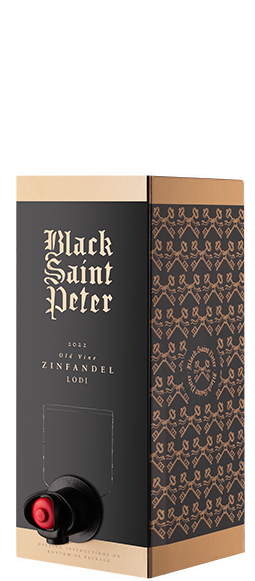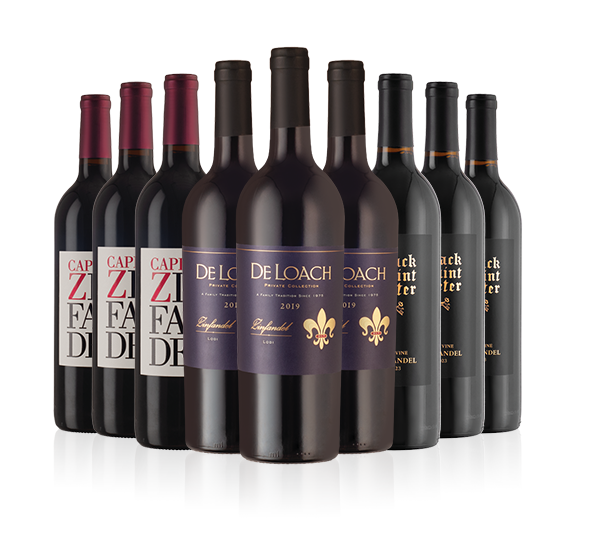Filter by
- $17.99 per bottle12 bottles - $215.88$194.28 Advantage Member Price
- $25.99 per bottle12 bottles - $311.88$280.68 Advantage Member Price
- $19.99 per bottle12 bottles - $239.88
- $19.99 per bottle12 bottles - $239.88$215.88 Advantage Member Price
- $16.99 per bottle12 bottles - $203.88$183.48 Advantage Member Price
- $16.99 per bottle12 bottles - $203.88$183.48 Advantage Member Price
- $12.99 per bottle12 bottles - $155.88$140.28 Advantage Member Price
- $17.99 per bottle12 bottles - $215.88$194.28 Advantage Member Price
- $26.99 per bottle12 bottles - $323.88$291.48 Advantage Member Price
- $32.99 per box12 boxes - $395.88$356.28 Advantage Member Price
- 12 bottles - $155.88
- 9 bottles - $191.91
- Showing (1 to 12 of 12)
1
Page 1 of 1
Wine FAQs
What is Zinfandel?
Zinfandel (pronounced zin-fuhn-del, often called Zin) ranks as the fourth-most popular grape variety in California, grown in over 10% of the state's vineyards. It’s also one of the earliest varieties planted in the state, with some vines over 100 years old. Zinfandel grapes are used to produce both bold, jammy red wines and the sweet rosé known as White Zinfandel. Known for its rich, fruity flavor, Zinfandel is often blended with other varieties. These wines range from light pink to deep red, typically medium-bodied with moderate alcohol. Zinfandel pairs well with a variety of foods and is a favorite for many wine lovers. Try it for yourself with our exceptional selection of Zinfandel wines, carefully chosen by WSJ Wine experts.
Where is the Zinfandel Grape Grown?
Zinfandel originates in Croatia, where it’s known as Tribidrag, and has a long history in southern Italy's Puglia region, where it’s called Primitivo and remains the dominant grape variety.
Zinfandel made its way to the U.S. in the early 19th century and found success in California, where it is still widely planted today. It flourishes in the northern and central coastal regions, particularly Napa Valley, Paso Robles, and Lodi.
Old-vine Zinfandels, primarily from Lodi, are known for their deep color and complex flavors. Grapes for White Zinfandel mostly come from California’s Central Valley.
Zinfandel thrives in warm, sunny climates but prefers high altitudes with cooler evening breezes, as its thin skins can't handle excessive heat. Beyond the U.S., Zinfandel is also grown in Canada, Australia, Chile, and South Africa.
What is Zinfandel Wine's Style and Character?
Zinfandel is a dry red wine with high acidity, medium tannins, and relatively high alcohol content (14-16% ABV). It features jammy fruit flavors like raspberry, black plum, and blackberry, complemented by spicy notes. White Zinfandel is light in body, has a pale pink color and lower alcohol content (around 12-13% ABV). It offers a refreshing burst of red-fruit flavors, making it a crisp and enjoyable option.
What Does Zinfandel Wine Taste Like?
Zinfandel is commonly planted on slopes, with grapes grown at lower altitudes offering sweet, juicy fruit flavors, while those from higher altitudes tend to be drier, showcasing baked fruit notes.
White Zinfandel has a sweet profile, featuring refreshing strawberry, melon, and raspberry flavors. Red Zinfandel, on the other hand, is known for its rich fruit notes, including:
- Cherry
- Jam
- Blueberry
- Cranberry
- Strawberry
- Plum
- Boysenberry
Despite its fruity character, red Zinfandel is balanced by spicy hints of:
- Anise
- Black pepper
- Tobacco
Red Zinfandel aged in new oak barrels also develops additional layers of traditional baking spices, such as:
- Clove
- Cinnamon
- Caramel
- Vanilla
How to Pick a Good Zinfandel Wine
If you enjoy sweet wines, White Zinfandel is a great choice. It’s easy to drink, versatile with food pairings, and perfect for a warm summer evening or a light lunch. This sweet rosé is also affordable and refreshing. For exceptional dry, red Zinfandel, seek wines from regions like Napa Valley, Dry Creek Valley, Russian River Valley (in Sonoma), and Lodi. For more savory depth and richness, choose Zinfandel grown at higher altitudes.
What Food Pairs Well With Zinfandel?
The ideal food pairing depends on the style of Zinfandel you select. White Zinfandel is delightful with fish, salads, fresh or roasted vegetables, and creamy pasta dishes. Lighter red Zinfandel, with its fresh and fruity notes, pairs wonderfully with lean chicken, pork, grilled salmon, and tomato-based pizza or pasta. It’s also excellent with spicy dishes, including Moroccan, Middle Eastern, Mexican, and Indian cuisines. For a full-bodied red Zinfandel, opt for rich, bold-flavored foods like grilled or BBQ meats, smoked cheeses, and heavily seasoned vegetable dishes.
How to Serve Zinfandel Wine
Serve White Zinfandel chilled, ideally between 49°-55°F, while red Zinfandel is best enjoyed at room temperature, around 68°F. For a full-bodied, mature Zinfandel, it’s recommended to decant the wine and allow it to aerate for about an hour before serving.















